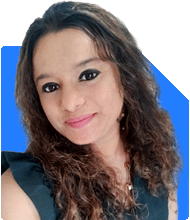How can a 26-year-old IT professional with Rs.1 lakh monthly income retire early with Rs.3-4 crores?
Ramalingam Kalirajan |10202 Answers |Ask -Follow
Mutual Funds, Financial Planning Expert - Answered on Jul 17, 2024
He has an MBA in finance from the University of Madras and is a certified financial planner.
He is the director and chief financial planner at Holistic Investment, a Chennai-based firm that offers financial planning and wealth management advice.... more

I am 26 years old and i work in an IT company . My monthly salary is 1 lakh as of now .I have 4.4 lakh in mutual fund , 2.4 lakh in PF , 1.67 lakh in PPF and 2.5 lakh of shares . I need to retire around the age of 40 which is 14 years from now with a corpus of 3-4 cr . Please advice me how should i invest so i reach that amount.
Your monthly salary is Rs. 1 lakh.
You want to retire at 40, 14 years from now, with a corpus of Rs. 3-4 crores.
Current Financial Situation
You have Rs. 4.4 lakhs in mutual funds.
You have Rs. 2.4 lakhs in PF.
You have Rs. 1.67 lakhs in PPF.
You have Rs. 2.5 lakhs in shares.
Setting a Realistic Plan
To reach Rs. 3-4 crores in 14 years, disciplined investing is key.
Assuming a mix of equity and debt investments.
Monthly Savings and Investments
Save and invest a significant portion of your salary.
Aim to invest 30-40% of your salary monthly.
This means investing Rs. 30,000 to Rs. 40,000 each month.
Choosing the Right Investments
Equity Mutual Funds
Equity funds offer high growth potential.
Consider large-cap, mid-cap, and small-cap funds.
Allocate around 60-70% of your investments here.
Hybrid Mutual Funds
Hybrid funds balance risk and reward.
They invest in both equity and debt.
Allocate around 20-30% of your investments here.
Debt Mutual Funds
Debt funds provide stability and regular income.
Allocate around 10-20% of your investments here.
Avoiding Index Funds
Index funds track the market passively.
They lack active management and can limit returns.
Actively managed funds can outperform index funds.
Disadvantages of Direct Funds
Direct funds may seem cheaper but need expertise.
Regular funds, through a Certified Financial Planner, offer professional management.
They provide personalized advice and ongoing support.
Systematic Investment Plans (SIPs)
Use SIPs for disciplined investing.
Invest a fixed amount regularly to average out market volatility.
Diversify Investments
Diversify your portfolio to reduce risk.
Include a mix of equity, hybrid, and debt funds.
Tax Efficiency
Equity mutual funds are tax-efficient for long-term gains.
Consider tax-saving funds under Section 80C for additional benefits.
Regular Review and Adjustment
Review your portfolio regularly.
Adjust allocations based on performance and goals.
Seek advice from a Certified Financial Planner for tailored strategies.
Final Insights
To achieve your goal of Rs. 3-4 crores, disciplined saving and investing are crucial.
A mix of equity, hybrid, and debt funds can balance growth and stability.
Regular reviews and professional advice will help you stay on track.
Best Regards,
K. Ramalingam, MBA, CFP,
Chief Financial Planner,
www.holisticinvestment.in
You may like to see similar questions and answers below
Ramalingam Kalirajan |10202 Answers |Ask -Follow
Mutual Funds, Financial Planning Expert - Answered on May 20, 2024
Ramalingam Kalirajan |10202 Answers |Ask -Follow
Mutual Funds, Financial Planning Expert - Answered on May 25, 2024
Jinal Mehta |103 Answers |Ask -Follow
Financial Planner - Answered on Jun 17, 2024
Ramalingam Kalirajan |10202 Answers |Ask -Follow
Mutual Funds, Financial Planning Expert - Answered on Jun 19, 2024
Ramalingam Kalirajan |10202 Answers |Ask -Follow
Mutual Funds, Financial Planning Expert - Answered on Jan 29, 2025
Nayagam P P |10070 Answers |Ask -Follow
Career Counsellor - Answered on Aug 08, 2025
Nayagam P P |10070 Answers |Ask -Follow
Career Counsellor - Answered on Aug 08, 2025
Ramalingam Kalirajan |10202 Answers |Ask -Follow
Mutual Funds, Financial Planning Expert - Answered on Aug 08, 2025
Ramalingam Kalirajan |10202 Answers |Ask -Follow
Mutual Funds, Financial Planning Expert - Answered on Aug 08, 2025
Ramalingam Kalirajan |10202 Answers |Ask -Follow
Mutual Funds, Financial Planning Expert - Answered on Aug 08, 2025
Ramalingam Kalirajan |10202 Answers |Ask -Follow
Mutual Funds, Financial Planning Expert - Answered on Aug 08, 2025
Nayagam P P |10070 Answers |Ask -Follow
Career Counsellor - Answered on Aug 08, 2025
Radheshyam Zanwar |6216 Answers |Ask -Follow
MHT-CET, IIT-JEE, NEET-UG Expert - Answered on Aug 08, 2025
Radheshyam Zanwar |6216 Answers |Ask -Follow
MHT-CET, IIT-JEE, NEET-UG Expert - Answered on Aug 08, 2025
Radheshyam Zanwar |6216 Answers |Ask -Follow
MHT-CET, IIT-JEE, NEET-UG Expert - Answered on Aug 08, 2025























